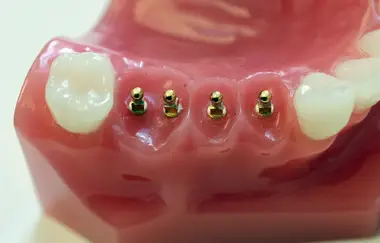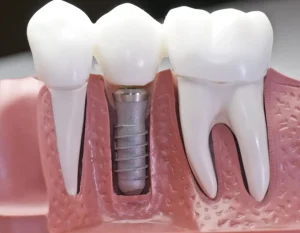Dental services have been brought up to a higher level by technology that features reliable tooth implants that are very lasting for people who have lost their teeth.
Dental implants are standalone cost remedies, but the dentures and dental bridges are replacement items which change time; that may seem as if dental implant costs are higher than dental bridges or dentures, but the lifetime salvage of dental implants will make them a good investment in long-tone oral health.
In this article, you will learn that the dental implant is more convenient and inexpensive than any other temporary option for dental loss.
Durability and Longevity
The implantation of an implant that looks like the original tooth takes place on a raft for more time toward lifetime and durability, so it has a desire for another method where the dentures and the bridge could be replaced. It can be found in the artistic creation of the design, the choice of material, and also in the way how leather and other elements harmonize in the result of their interplay. This implant will be made out of titanium, which, for now, still requires that the surgeon insert it directly into the jawbone. This bonding procedure is not achieved shortly but gradually, even though it may take several long years. – This process takes place at a large level and is called osseointegration.
With this amalgamation of materials, the process acts as a formulation that the artificial teeth implants can use for absolute accuracy and, thereby, the very strong bond that especially the healthy teeth form with it. The reason titanium is chosen instead of just any other raw material is that the proper choice of implant material is characterized by high resistance to chewing and biting forces that decrease over time.
A crucial characteristic that puts the implants in the same rank as natural teeth is that they are analyzed through the benchmark of time and can last more than thirty years as they will be subject to stress. They will show resistance to wear for decades, as is a characteristic of such a dental restorative method.
We covered the virtues of durable features for factual reasons that are responsible for reducing long-term costs as dental implants because allowing for longer stays will make it rarer for people to replace their natural teeth in comparison with the same models of substitutes.
Reduced Maintenance Costs
Dental implants offer long-term cost savings in which maintenance requirements are less frequent than bridges and dentures. Conventional dentures usually demand to be applied with external helpers like adhesives and special cleaners to provide the exact fit and all-the-time hygiene.
Over time, these periodic adjustments may be needed to prepare for changes in jaw structure. A dental implant is similar to a real tooth in that it needs to be cared for like a natural tooth. Consistency in oral hygiene is the key – brushing and flossing regularly with dental examinations scheduled from time to time will allow the implant and the gums to remain healthy.
The lack of a lengthy accumulation of maintenance engagements and the omission of high-expenses specialised cleaning supplies greatly affect cost-effectiveness.
Consequently, dental implant patients usually reduce long-term expenses, presenting it as a financially wise option for them over time. Implant systems require less time for insertion and less need for frequent readjustments, replacements, and specialised maintenance, decreasing the cost of what people spend on it as a durable and low-maintenance solution for tooth substitutes compared to other methods.
Though a one-time investment, the expenditure on good quality dental care becomes a tool that prevents future problems, making dental care a lasting solution and a significant saving in human and financial resources.
Preservation of Bone Structure:
The preservation of the bone architecture is an important functionality, and the wearing of implants is long-lasting and of high quality.
The bone helping the natural tooth in the past can not be properly stimulated because taking the natural roots with the tooth causes the jaw bone to be in danger of deteriorating. They both are used to fill where there is a void; the dental implant is the part that slots into the bone where the missing teeth and the natural tooth root in your jaw bone used to be.
The titanium implant and parts of the jawbone are put together, and osseointegration, the process where the titanium and the jawbone connect uniquely, takes place. Thus, the titanium is put securely in the bones and is kept there in the long term. This is nothing else than taking off the crown of the natural tooth again to discover the real root of the tooth.
Subsequently, the benign jawbone is not handicapped in its process of slightly receding. This measure is a part of the essential package to keep the entire jaw healthy and also plays a significant role in the security of tooth implantation.
Distinguishing the dental implants from the dentures and bridges, which need therapy as a result of resorption, dental implants not only support the bone tissue, but they also maintain its health, therefore avoiding the bone resorption, which may again lead to further adjustments and replacements but most importantly mean financing of the demanding and very expensive treatment for bone resorption as a consequence of every process of replacement.
Avoiding Future Dental Procedures
A dental implant to fill a gap is a proactive procedure that not only deals with the issue of teeth replacement but also prevents other infections that can cause even some serious extensive dental procedures in the future.
Nevertheless, dentures and bridges, in each case, play the role that is very much traditional and good, but they can avail of the adjacent, that is, natural teeth, to essentially add an extra burden or strain and stress, which these natural teeth were not inherently built to handle.
The continued loss of teeth and damage to the existing ones stimulate the demand for dental care, which puts pressure on one’s budget and requires more frequent intervention. According to resins, which belong to the category of not very critical cases when the adjacent teeth aren’t wouldn’t threatened, they are also included in the “standalone” group as they have no impact on the well-being of the nearby teeth.
Granted that the implant becomes one with the jaw bone, allowing the restoration process of the teeth to be carried with utmost simpleness, it will also give relief to the surroundings and this, in turn, will result in increased stability as well. One of the advantages is that dental implants not only help solve oral problems but also provide a possibility of keeping anointment with other troubles if you take the step immediately.
Although you may experience various difficulties in life, you can avoid them by taking appropriate action when facing similar circumstances. However, the therapeutic method contains some problems and flaws related to permanent oral problems, long-term dental health, and the money we must spend on procedures and interventions if we do not choose the preventive approach.
Steadfastly said, the choice of dental implantation shows the individual’s determination for the future, which is a long-term benefit, not only for the current structure but for the optimal performance and function of the entire dental structure.
Conclusion
The investment into the implanting type dental solution dominates at the beginning time for the reason that the implanting cost is high against those other teeth replacement options. Still, the implantation results in overall savings after a period of time and hence can be considered as a good investment for oral health.
Recommended post: Choosing the right dental implant specialist for your implant surgery


